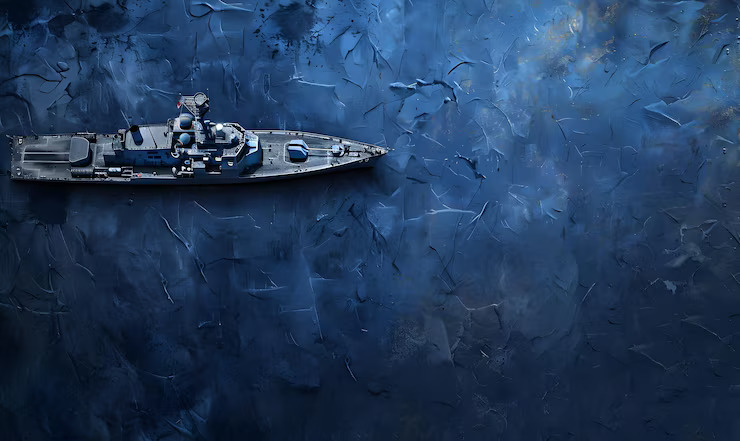Navies worldwide are undergoing rapid evolution in response to rising geopolitical tensions, emerging technologies, and climate-related challenges. This shift is reflected in recent navy news, which shows how modern fleets are adapting through modernization efforts, strategic alliances, and expanded roles in humanitarian missions. In 2025, the navy’s function is more diverse than ever—spanning traditional warfare, cyber defense, environmental monitoring, and diplomatic presence.
New Maritime Strategies for a Changing World
Several nations are rethinking their naval strategies in response to shifting power balances. The Indo-Pacific remains a critical hotspot, with increased competition between the United States and China driving regional naval expansion. Countries like India, Japan, and Australia have intensified joint exercises and shipbuilding efforts to maintain strategic parity and ensure the security of key maritime routes.
Meanwhile, NATO members have ramped up naval activity in the Baltic and Mediterranean Seas to deter potential threats and protect territorial waters. This renewed focus on maritime strength is not limited to major powers; even smaller nations are investing in coastal defense systems and multi-role vessels that offer flexibility in both peacetime and conflict scenarios.
These strategic recalibrations are driven by a need for greater agility, improved deterrence capabilities, and stronger interoperability between allied navies.
Green Fleets and Sustainable Operations
Climate change has not only impacted the physical environment but also naval priorities. Rising sea levels, melting Arctic ice, and unpredictable weather patterns are reshaping the nature of maritime operations. As a result, navies are being asked to take on broader roles—such as search and rescue missions, disaster relief, and environmental surveillance.
In response, many navies are making significant investments in sustainable technology. Hybrid propulsion systems, emissions-reducing fuels, and advanced hull designs are being introduced to reduce the carbon footprint of ships. The Royal Navy and the U.S. Navy have both initiated programs to transition a portion of their fleets to alternative energy sources.
There is also a growing emphasis on climate resilience in ship design. Vessels are now being built to endure harsher weather conditions and extended missions in remote areas like the Arctic. As ice caps recede, new trade routes are opening, prompting navies to increase their presence in polar regions to protect emerging shipping lanes.
Rise of Multi-Domain Operations
Modern naval warfare is no longer confined to the sea. The latest reports in recent navy news emphasize a trend toward multi-domain integration—combining sea, air, space, and cyber capabilities to achieve superior situational awareness and response agility.
For instance, the use of satellites for real-time ocean surveillance has become essential. Maritime patrol aircraft now carry advanced radar and electronic warfare tools that integrate seamlessly with surface vessels and submarines. Drones are also increasingly deployed for reconnaissance, search and rescue, and combat support.
These platforms share data in real-time, allowing for coordinated decision-making across multiple levels of command. With threats becoming more asymmetric and fast-moving, the ability to act on real-time intelligence from various domains is critical for mission success.
Cyber Threats on the Rise
The cyber frontier has emerged as one of the most pressing concerns for naval forces. Ships, submarines, and naval bases are now vulnerable to attacks that can disrupt navigation systems, weapon control software, or communications. Cyberattacks can compromise supply chains or even shut down key operations without a single shot being fired.
To counter these risks, navies are embedding cybersecurity directly into their infrastructure. Regular audits, encrypted networks, and AI-powered monitoring systems are now standard in most naval IT environments. Many forces have created specialized cyber commands focused on both defense and offense in the digital domain.
In addition, simulated cyber drills are conducted alongside traditional military exercises, preparing crews to respond to electronic attacks as part of wider operational readiness.
Expanding Roles in Peacekeeping and Diplomacy
Navies are increasingly involved in non-combat missions that strengthen diplomatic ties and build goodwill around the world. Humanitarian assistance and disaster relief (HADR) missions, anti-piracy patrols, and medical outreach programs are now integral to naval deployments.
One notable example is the deployment of hospital ships to regions hit by natural disasters. These vessels deliver critical aid and medical care in hard-to-reach areas, showcasing naval power not as a force of destruction, but as an agent of relief.
Similarly, joint maritime exercises have become more inclusive, with navies from Africa, South America, and Southeast Asia participating in drills aimed at building cooperation and sharing best practices in maritime law enforcement and search-and-rescue operations.
Naval Innovation and Defense Contractors
As modern navies become more tech-reliant, their relationships with private defense contractors have deepened. Many of the most cutting-edge innovations—from hypersonic missiles to stealth coatings—come from partnerships with civilian firms. These collaborations are vital in ensuring navies stay ahead of emerging threats.
However, this close relationship also brings challenges, including oversight issues and ethical concerns. One example that has gained attention is a series of misconduct investigations involving private contractors. The recent navy news surrounding defense procurement scandals shows the importance of transparency and accountability in the partnership between public and private sectors.
Conclusion
Naval forces around the world are evolving rapidly to meet the demands of a more complex and interconnected world. From technological upgrades to environmental missions, the modern navy is a multifaceted institution navigating both traditional and emerging threats. As fleets become smarter and more sustainable, and as cyber and space become new theaters of conflict, the role of navies will only grow in strategic importance.
For continuous coverage of these dynamic changes and the issues shaping tomorrow’s maritime defense, The Veza remains a key source, delivering insight into the policies, partnerships, and technologies guiding the next chapter of global naval operations.





Comments